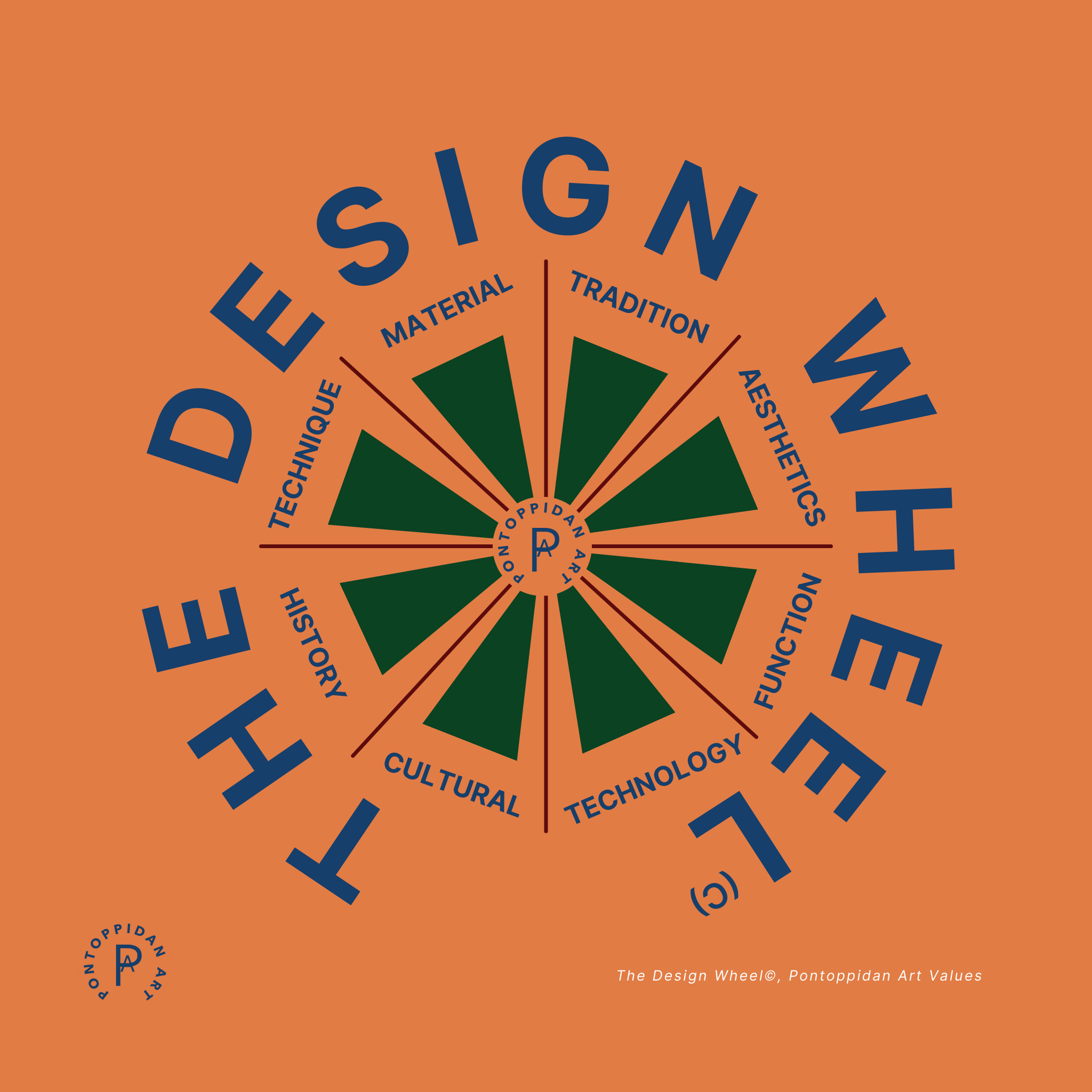As an artist deeply engaged with philosophy, education, and leadership, I’ve always been fascinated by how art and philosophy mirror one another. Both strive to interpret the paradoxes and contradictions of human existence. To structure my creative process and ensure that my work reflects a deeper philosophical inquiry while fostering education and inspiring leadership, I developed the Design Wheel©. This tool connects the material and aesthetic aspects of art with profound philosophical questions, encouraging new ways of thinking about art’s role in the contemporary world.
What is the Design Wheel©?
The Design Wheel© is a model built on nine core elements: Tradition, Material, Aesthetics, Technique, History, Function, Technology, and Social & Cultural Contexts. Each element reflects a critical dimension of the artistic process and serves as a framework to explore art’s deeper impact on humanity. Together, these elements form a lens through which I examine art’s power to educate, inspire, and lead change in the world.
At its heart, the Design Wheel© is about positioning art as an active agent of ethical responsibility, philosophical reflection, and societal transformation. Let’s look at how these elements reflect my core values:
Philosophy in the Design Wheel©
- Tradition & History: These elements challenge us to engage critically with historical practices, understanding their significance while questioning how they can evolve to address the complexities of modern life. Through philosophical inquiry, I explore how the past can inform the present while pushing us to innovate responsibly.
- Material & Aesthetics: Art is not just an object but a medium for philosophical exploration. Aesthetics asks: What is beauty, and why does it matter? Materiality explores our relationship with the natural world and how sustainable practices can deepen our understanding of human existence.
Education in the Design Wheel©
- Function & Technique: These elements frame art as a tool for teaching and learning. Whether through form, method, or process, art can inspire intellectual curiosity and encourage deeper understanding of societal and ethical questions. By sharing my techniques and approaches, I aim to make my practice a platform for education, fostering connections between art and its viewers.
- Technology: In today’s world, technology plays a vital role in education. The Design Wheel© reflects on how digital tools and new media expand the accessibility of art and enhance audience engagement. It challenges us to ask: How can technology serve as both a creative and an educational force?
Leadership in the Design Wheel©
- Social & Cultural Contexts: Art’s role in society is inseparable from its political and cultural context. The Design Wheel© underscores the importance of art as a leader in shaping conversations about justice, sustainability, and human connection. It invites critical reflection on how we live and interact as individuals and communities.
- Function: Beyond decoration, art inspires action. The Design Wheel© positions art as a vehicle for societal leadership, encouraging discussions on climate change, equality, and freedom. It’s about creating art that not only reflects but also leads change.
A Unified Vision: Art as Reflection and Action
With the Design Wheel©, my goal is to create a practice where art serves as a bridge between philosophy, education, and leadership. It’s a tool for reflection and action—a way to think critically about how we create and live in harmony with our history, technology, and environment. Each element of the wheel invites us to consider art’s potential to educate, inspire, and lead society toward a more thoughtful and sustainable future.
By integrating these values into my creative process, I hope to engage audiences not just as viewers but as active participants in the philosophical and societal dialogues that shape our world.


21 kommentarer
vwrboz
zgoscg
ap5edz
vf0cf3
813no8
kvsl55
kvsl55
2mdlep
odyjqa
cqmq34